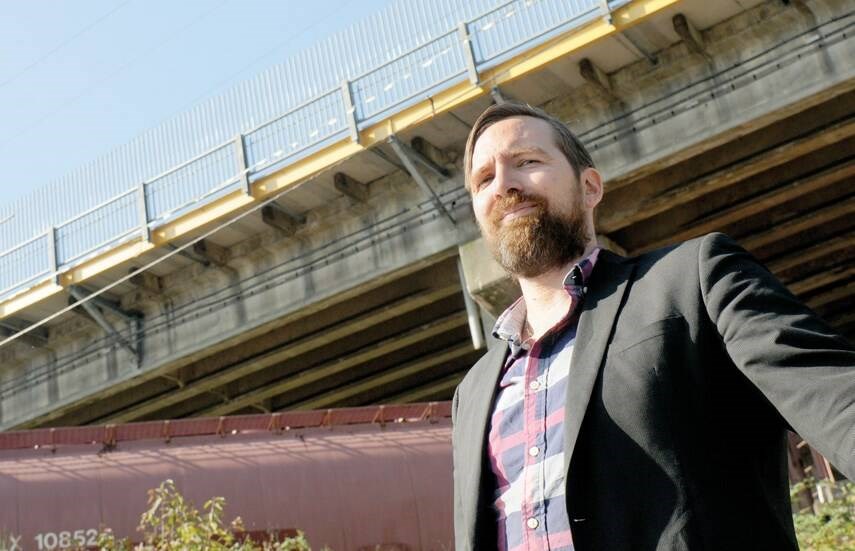Four years ago, in this newspaper, I declared that the North Shore needs rapid transit now. Based on evidence, I said that this needed to get done in 10 years, not in the long term.
My research team had conducted a study to determine the number of residents and jobs that would be served within a short five-minute walk of a light rail transit (LRT) line stretching between Ambleside and Capilano University (400 metres is the critical area for generating ridership). The numbers surprised many politicians, who had long assumed that buses would be the ultimate form of transport on the North Shore. The North Shore, on its own, performed roughly equal to the costly Arbutus-UBC subway proposal, and significantly better than projects in Surrey.
Since that time, we extended our study to add LRT between Phibbs Exchange and Metrotown, by way of a new or refurbished multi-modal harbour crossing (including trucks and freight rail) with stops at a new PNE West Coast Express station, the Millennium Line at Brentwood, BCIT and the Expo Line at Metrotown.
The inclusion of Burnaby’s residents and jobs raised eyebrows across the region, as the current numbers blow away the UBC subway, while clearly delivering broader benefits, including the potential removal of 50,000 cars from the two bridges on a typical weekday and serving 20 per cent of long-term regional growth (only two per cent at Point Grey-UBC). This line would generate excellent ridership in both directions, throughout the day, and serve recreational destinations on weekends, when bridge traffic is often at its worst.
The North Shore’s density is clearly focused in a series of hubs along a relatively straight line near the waterfront, while Burnaby’s hubs are some of the densest places in Metro, and offer direct SkyTrain connections to the rest of the region, where much of the North Shore’s workforce is based.
So where are we at now? A pair of consulting studies were completed, which re-affirmed the merits of the West Van-Metrotown route but left the rapid transit technology undetermined. TransLink also named this corridor as a priority in their 2050 plan, but only committed to buses for the foreseeable future. Others have advocated for costly and intrusive SkyTrain technology. I believe neither is suitable for the North Shore, and that LRT best meets our needs.
LRT is the most flexible urban rail technology and has been implemented in countless cities around the world, including Portland, Calgary and Toronto. Its flexibility to operate in its own lanes next to traffic, or fully grade-separated, allows for easy integration in diverse urban and suburban settings. Running at surface, LRT is segregated from car traffic, with driver controlling traffic signals and no stairs at stations.
Where technical constraints dictate, sections of the line can be built on an elevated guideway or in a tunnel, like SkyTrain. With tunneling costs now over $700-million per kilometre for proposed projects in Canada, it is unlikely that we will see a subway across the North Shore, while elevated SkyTrain can not be easily integrated in denser areas west of Lonsdale and is double the cost of surface LRT.
At roughly one-sixth the cost of subways, surface LRT is the most economical way to deliver significant benefits at an affordable price, particularly in places where an elevated SkyTrain guideway would ruin the urban landscape, as in Ambleside, along Marine and through the Lonsdale area. To enhance speed, there are a few places where elevated sections could be implemented, particularly along the Low Level Road to the PNE, and in parts of Burnaby. Therefore, this line would be a hybrid surface/elevated LRT line, respecting diverse conditions in each segment, and balancing speed with user-friendliness, urban integration and cost.
Voters should look to candidates for solutions that will deliver transformational benefits without breaking the bank. Band-aid solutions like the Highway 1/Lower Lynn upgrade have not lived up to expectations because they don’t offer a practical alternative to the car. Bus Rapid Transit may be cheaper, but it will never provide the comfort and efficiency of rail, while promises of SkyTrain and subways to the North Shore are neither practical for our setting, nor affordable (which will cause delay).
I once again call for us to get this done within 10 years. Our quality of life is diminishing as congestion steals our time, harms the environment and undermines our economy (amplified by the recent announcement that we will lose of one of the largest employers on the North Shore, ICBC, in no small part a result of inadequate transit). Now imagine travelling by LRT across the North Shore, and up to Metrotown during rush hour without any worries of traffic congestion – fully separated from car traffic. Push your new leaders to move this forward now!
Stephan Nieweler is a planning and transportation instructor and researcher, in the department of geography at Simon Fraser University. Before to returning to academia, he was involved in planning rapid transit systems while based in the U.K., India, Toronto and at TransLink in Vancouver. He grew up in the District of North Vancouver and now lives on Bowen Island.
What are your thoughts? Send us a letter via email by clicking here or post a comment below.




